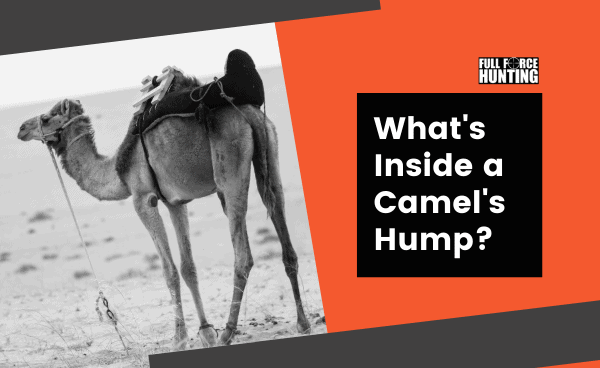What's Inside a Camel's Hump?
Let's end the misconception that a camel's hump is made of water - they're actually made of fat. A camel's hump(s) help endure the harsh environments and long periods with little food and water. Even in the Canadian Arctic, where camels originated millions of years ago, camels used their fatty humps to survive the long winters.

Can you Eat Camel Humps?
The fat in camel humps serves as an energy source and an alternative for food. The fat is apparently 'piled up' to shape like a hump so it doesn't overheat in the desert, where camels are normally found these days. The humps also help shield the camel's back from the desert's intense heat of the sun.
Each hump stores up to 36 kilograms of fat, enough for the camels to survive for weeks (even months) without food. Their blood cells are also unique, giving camels the ability to store 240% more water than usual, so they almost never run out of water in their system too. When camels run out of hump fat however, the humps lean limp to the side and diminish in size.
Like the camels, humans have begun to take interest in consuming the fat from the camel humps as well. The fat is actually incredibly nutritious, and people are gaining health benefits from cooking and eating it. It's becoming a 'superfood', as camel fat contains loads of fatty acids, vitamins and minerals. One tablespoon of camel fat is said to contain 40% of a human's Vitamin B2 intake needs, and 3 times the amount of oleic acid, which is found in coconut oil, another superfood staple.

Feral Camels in Australia
Introduced to Australia in the 1800s, dromedary camels occupy an approximate 3.3 million km2 of land, including Aboriginal lands and conservation areas.
The negative impacts of feral camels as pests affect economic, environmental and social aspects of life. Feral camels damage livestock yards, wetlands and vegetation. They also create road hazards damage to residential infrastructure such as taps, pumps and toilets.
With the abnormal number of camels running around Australia's lands, culling projects and strategies have been put in place. In Caboolture, Queensland, an abattoir of multi-species animals process feral camels on a daily basis, exporting camel meat to Europe, the United States and Japan. Live camels are occasionally exported to Saudi Arabia, the UAE, Brunei and Malaysia as well and are treated as a prized delicacy.
Cooking with Camel Hump and Hump Fat
Desert Farms, a company in the United States, sells hump fat in jars, and they source this from wild camels in the Australian desert. As camel hump fat is a great alternative to coconut oil - albeit a little more expensive - it's widely used to cook keto meals. A popular delicacy on the Internet from Our Gabled Home uses camel hump fat to roast potatoes and brussel sprouts.
The smell of camel hump fat is quite gamey, but it's not off-putting and most of the time your food would still taste delicious - it's almost unnoticeable.
Roasting a whole camel hump is delicious in itself as well. Marinate your hump for a couple of hours and roast it in a hot oven at 220 degrees Celsius for 2 1/2 hours. Serve it with rice and sides and you have yourself a meal.

